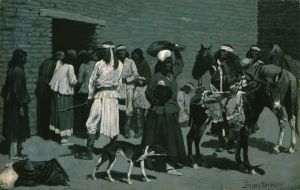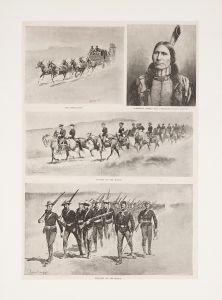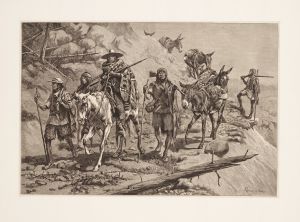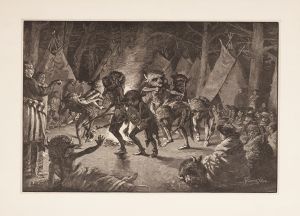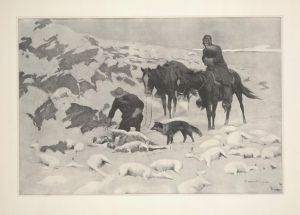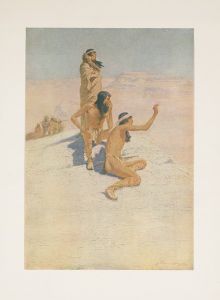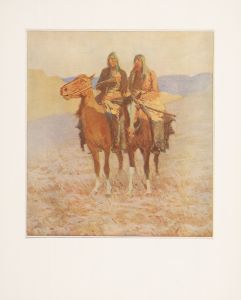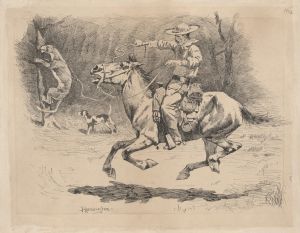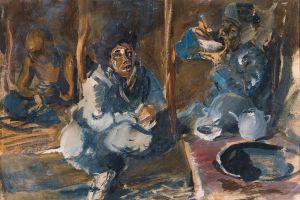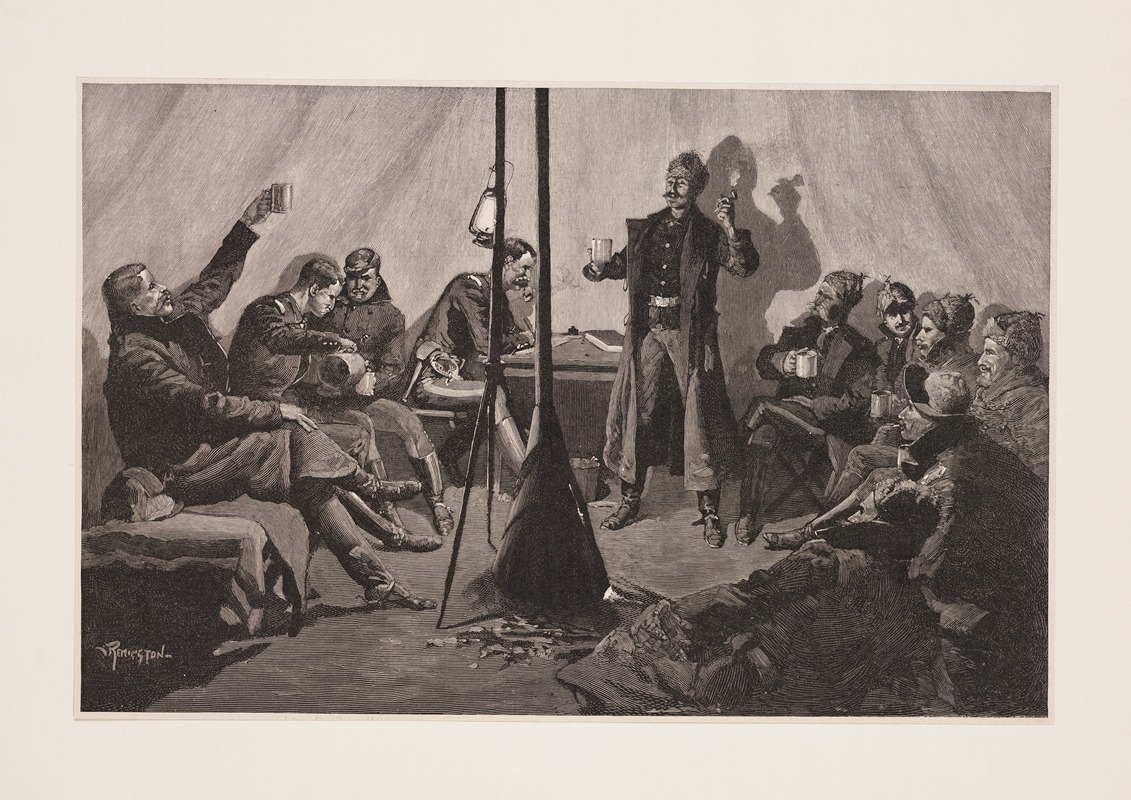
Merry Christmas in a Sibley tepee
A hand-painted replica of Frederic Remington’s masterpiece Merry Christmas in a Sibley tepee, meticulously crafted by professional artists to capture the true essence of the original. Each piece is created with museum-quality canvas and rare mineral pigments, carefully painted by experienced artists with delicate brushstrokes and rich, layered colors to perfectly recreate the texture of the original artwork. Unlike machine-printed reproductions, this hand-painted version brings the painting to life, infused with the artist’s emotions and skill in every stroke. Whether for personal collection or home decoration, it instantly elevates the artistic atmosphere of any space.
Frederic Remington's painting "Merry Christmas in a Sibley Tepee" is a notable work by the renowned American artist, who is best known for his depictions of the American West. Remington, born in 1861, was a painter, illustrator, sculptor, and writer who gained fame for his vivid portrayals of cowboys, Native Americans, and U.S. Cavalry soldiers. His works are celebrated for their dynamic composition and attention to detail, capturing the essence of life on the frontier during the late 19th and early 20th centuries.
"Merry Christmas in a Sibley Tepee" is one of Remington's lesser-known works, yet it encapsulates his ability to convey the spirit of the American West. The painting depicts a scene inside a Sibley tepee, a type of conical tent that was commonly used by the U.S. Army during the mid to late 19th century. The Sibley tepee, named after its inventor, Henry Hopkins Sibley, was designed for practicality and efficiency, providing shelter for soldiers in various weather conditions.
In the painting, Remington captures a moment of camaraderie and festivity among soldiers during the Christmas season. The interior of the tepee is illuminated by a warm, inviting light, suggesting the presence of a fire or lantern. Soldiers are gathered together, likely sharing stories, food, and perhaps small gifts, creating a sense of warmth and community despite the harsh conditions outside. This scene reflects Remington's interest in the human aspects of military life and his ability to portray the emotional experiences of those living on the frontier.
Remington's use of color and light in "Merry Christmas in a Sibley Tepee" is characteristic of his style. He often employed a palette that emphasized earthy tones, which helped to convey the ruggedness of the Western landscape and the people who inhabited it. In this painting, the contrast between the dark interior of the tepee and the warm glow of the firelight highlights the sense of refuge and comfort found within.
The painting also serves as a historical document, offering insight into the daily lives of soldiers stationed in remote areas during the late 19th century. It provides a glimpse into how these men might have celebrated holidays far from home, maintaining traditions and morale in challenging circumstances. Remington's attention to detail, from the soldiers' uniforms to the tepee's construction, adds authenticity to the scene and underscores his commitment to accurately representing the subjects of his work.
While "Merry Christmas in a Sibley Tepee" may not be as widely recognized as some of Remington's other pieces, it remains an important part of his oeuvre. It exemplifies his skill in capturing the nuances of frontier life and his ability to convey the resilience and spirit of those who lived it. Through this painting, Remington not only documents a specific moment in time but also celebrates the enduring human capacity for joy and fellowship, even in the most challenging of environments.







